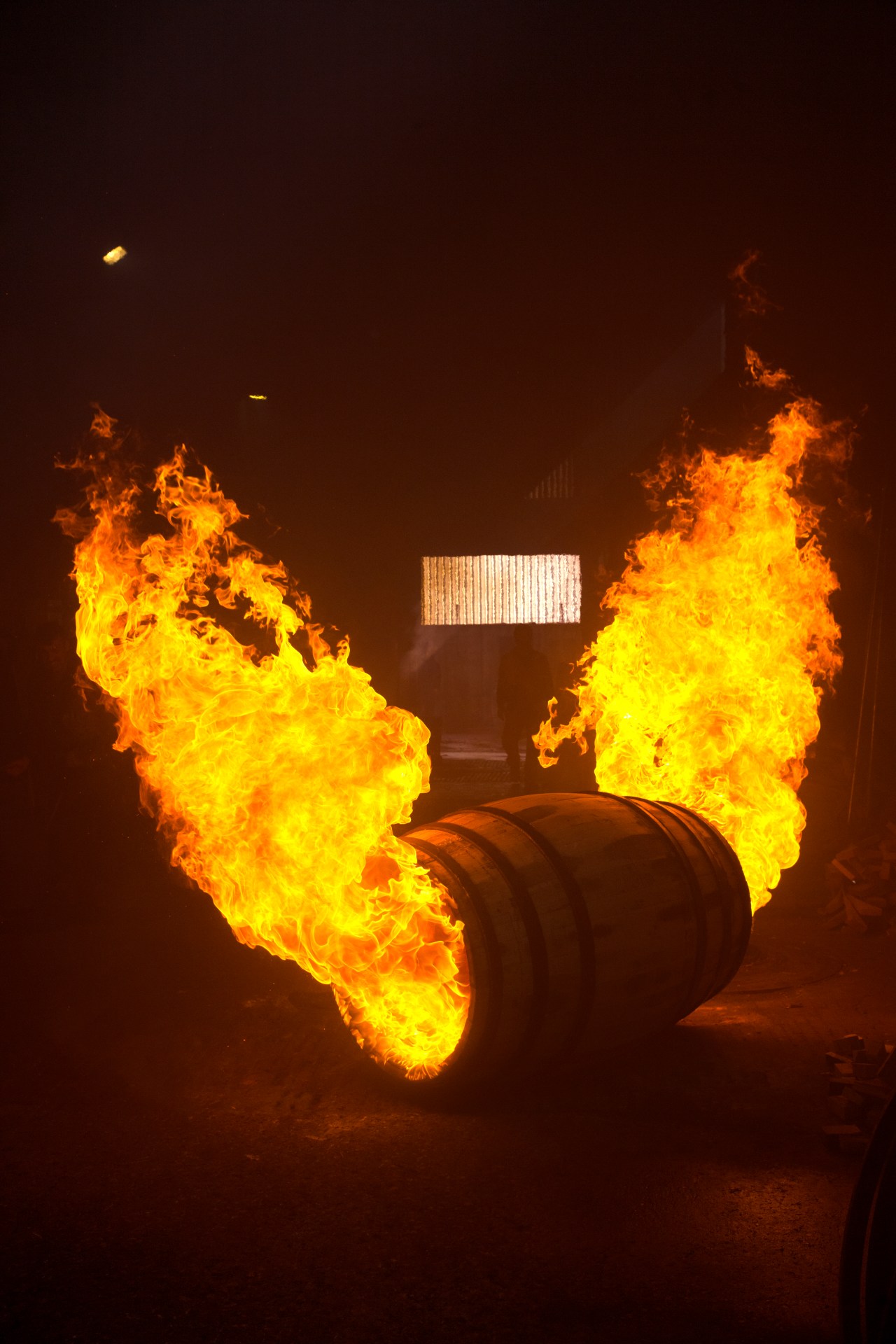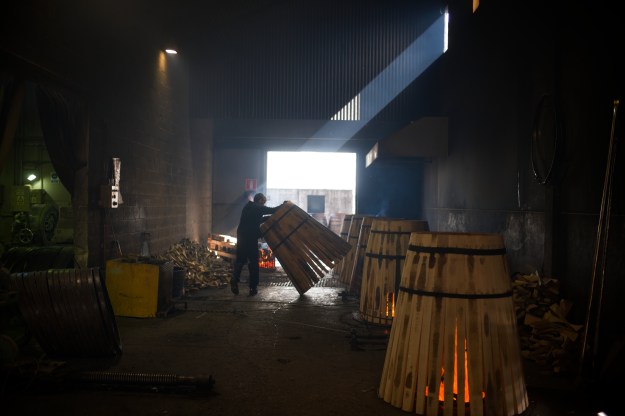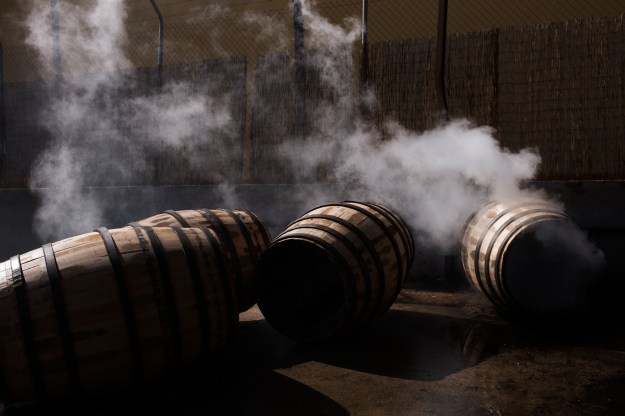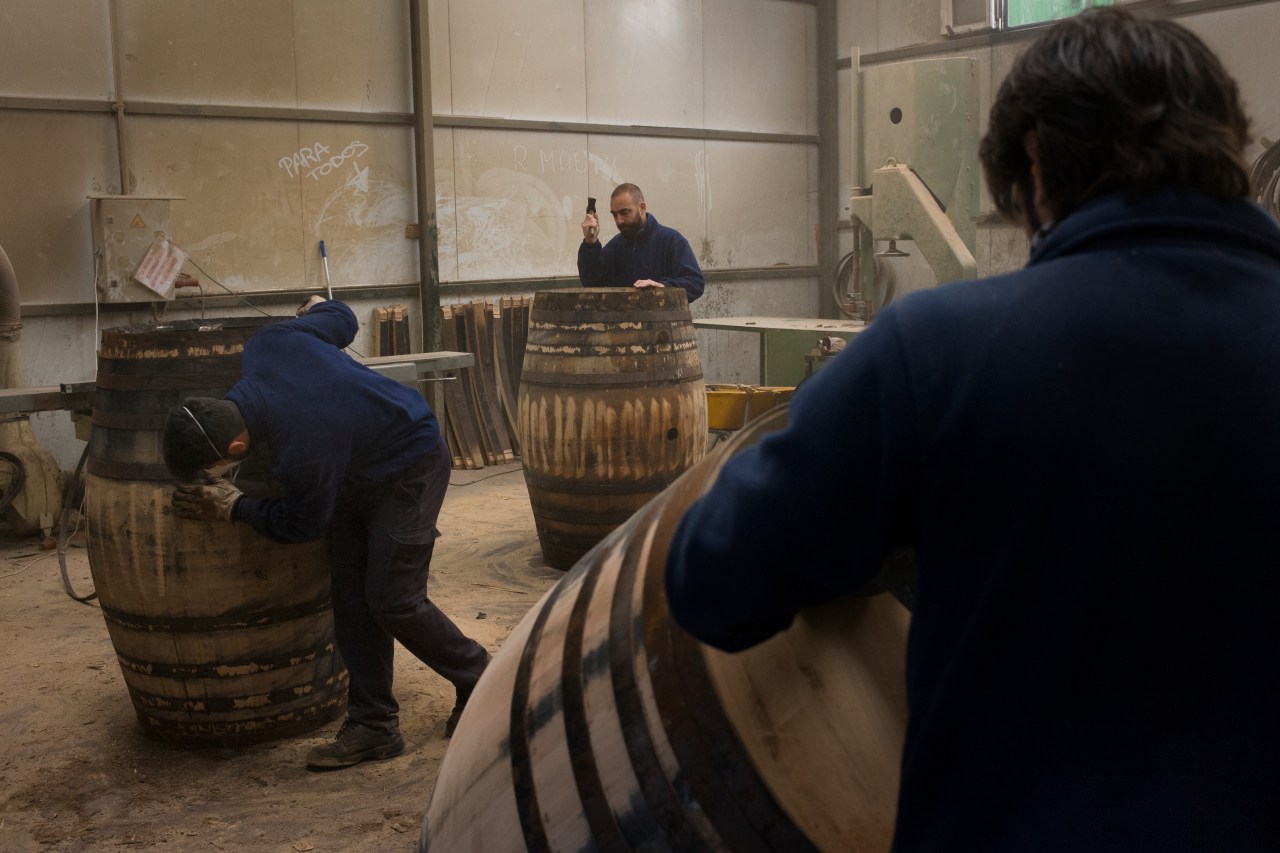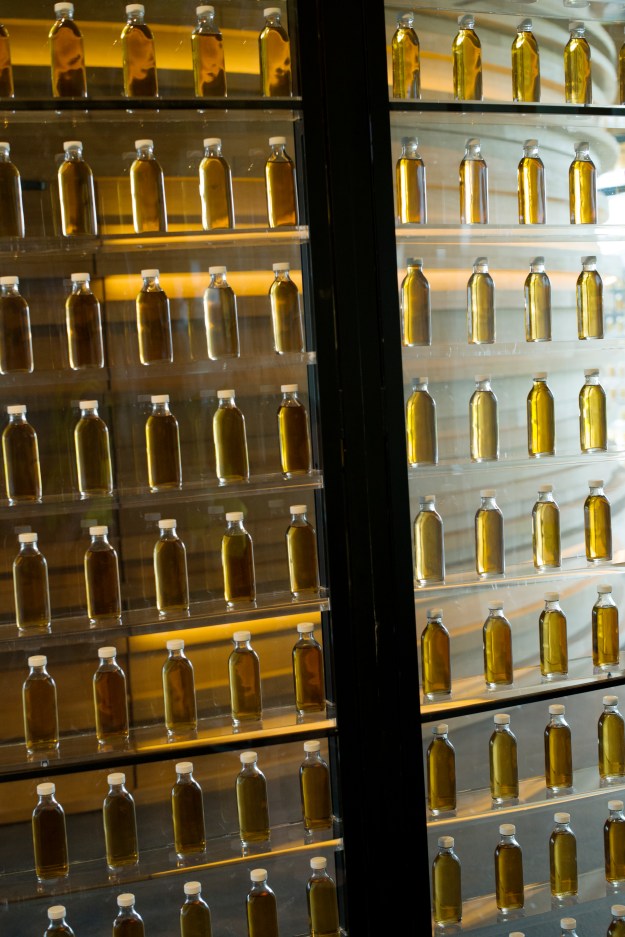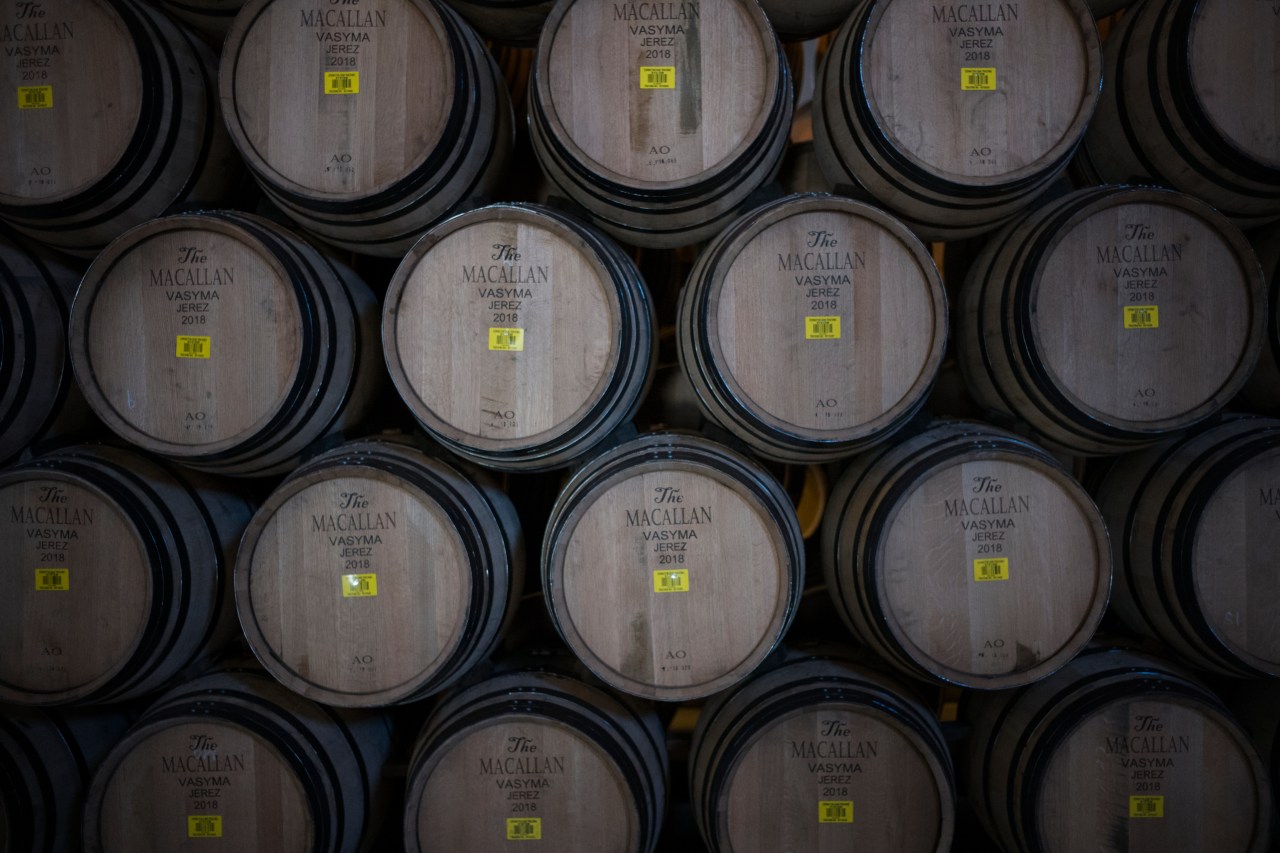“Get yerself a wee cheeky snifter,” said Robert Mitchel, the Easter Elchies Estate ghillie, dressed in his tweed and accompanied by his dogs by the banks of the Spey.
The dram, the Macallan Amber, had the classically sweet and unpeated notes of Speyside mixed with the dried fruit and old leather that come from years spent aging in sherry barrels. “The style of Macallan has always been rich, dark, spicy notes from European oak,” Stuart McPherson, the Macallan’s master of wood, told me, which makes for an excellent spirit to lift the chill while you fish for salmon from the Spey’s swift current. But I had to pause and wonder how the flavor of Spanish fortified wine ended up in my drink in the heart of the Scottish Highlands.
It turns out that flavor profile is essentially an accident of history.
For a long time, scotch whisky was illegal, moonshined in deep glens away from the tax collectors’ gaze. Typically, it was pulled straight from the still and sold as a clear spirit, stored briefly in whatever vessel was the cheapest on hand or sold by the batch to local drinkers.

Sherry, by contrast, was born to travel, fortified with extra alcohol for long sea voyages. The wine is aged solera style in casks that are carefully seasoned and used for decades until they break, ensuring consistency as the liquid rests until its desired age. A chilled glass of fino pairs perfectly with the nutty jamón and hard cheeses of Spain’s Jerez, and a bodega owner showed me how to add a touch of oloroso to a spicy soup to really warm up on a cold day. And up until the peak of sherry’s global popularity, people in Great Britain were fond of the taste as well. So the wine was drained from the ancient solera barrels and shipped in new oak casks that, like shipping containers today in America, piled up on the shores of England and Scotland.
Because these casks were cheap, whiskey-makers often bought them up to hold their spirit while they worked to sell it. But, as the whiskey sat, waiting for buyers, the sherry imparted some of its raisin flavor to the whiskey and, as scotch became legal and then globally legendary, that note became the core of some brand’s style.
“This was built on the success of the sherry industry,” explained McPherson, which made for a happy marriage of drinks. But then in the middle of the 19th century, everything changed.
First, bottles became less delicate, making it possible to ship them, and Spain mandated that all of its wine be bottled on its shores. Suddenly, there were no more shipping barrels. Then, starting in the 1960s, as scotch came into its prime, the sherry market collapsed and took many old bodegas with it.
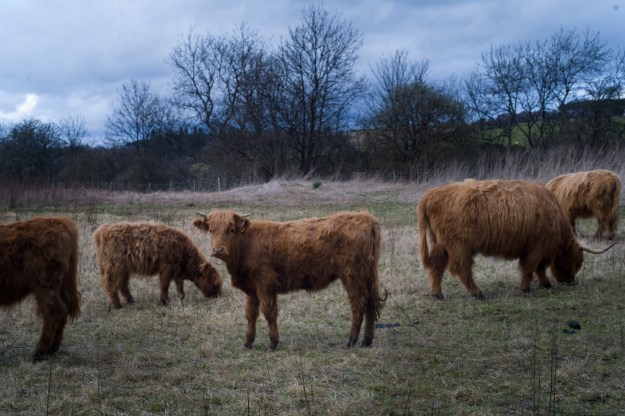
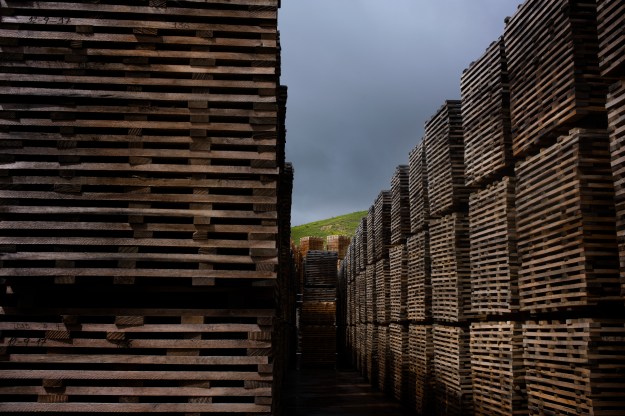
Fortunately for some brands, American bourbon was starting to spin off enough barrels to fill in the gaps. (Bourbon has to be aged in a new barrel, protecting American coopers and ensuring a steady supply of used barrels for the rest of the world.) For smokey scotches, these barrels worked perfectly to develop the flavor, but for the lighter, fruitier brands, sherry barrels were still preferred.
Edrington, the Macallan’s parent company, has made what seems to be the most significant investment to protect its sherry flavor, deploying a master of wood to develop its supply chain from acorn to cask. For the last 30 years, McPherson has been responsible for sourcing the best Quercus robur (European oak) and Quercus alba (American oak), working with three cooperages in Jerez to turn the raw wood into custom-charred casks and then to track down the right sherry to season the new barrels.
The arrangement is expensive—the Macallan pays more than twice as much for its sherry barrels than for its bourbon barrels—but, for the company, it’s worth it.
“Eighty percent of a whiskey’s flavor comes from the wood,” explained McPherson as we walked through the flames and organized chaos of a cooperage. Having the relationships that he has built allows the Macallan to carefully tune every step of the process for every ingredient of its spirit.
“I’ve had relationships with some of these people for 30 years,” says McPherson.
The business model works well for sherry makers too, as the accident of history that has brought them together with scotch, now pays a large share of the bills to keep historic bodegas afloat.
“We are not making much money in the sherry business,” said Ventura Nunez from Vasyma Cooperage, as she said that roughly half of all sherry production and nearly its entire cask business is in service to the scotch industry. But in the end, she concluded that, thanks to the growth in scotch whiskey consumption, “we are living right now in the best time of the cooperage industry.”
